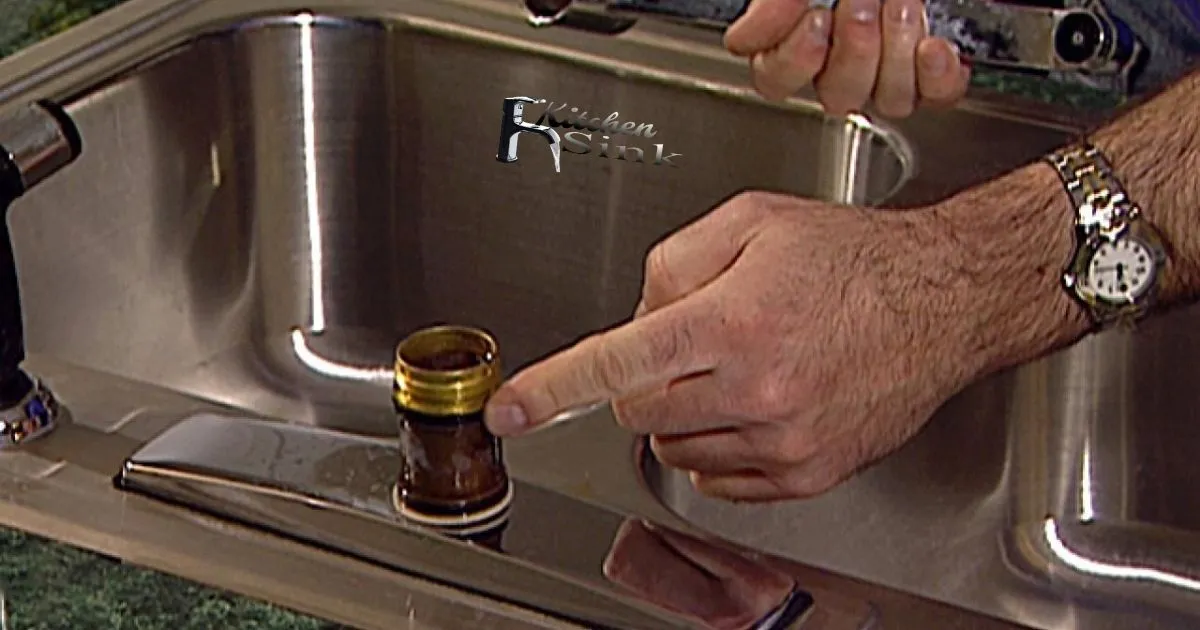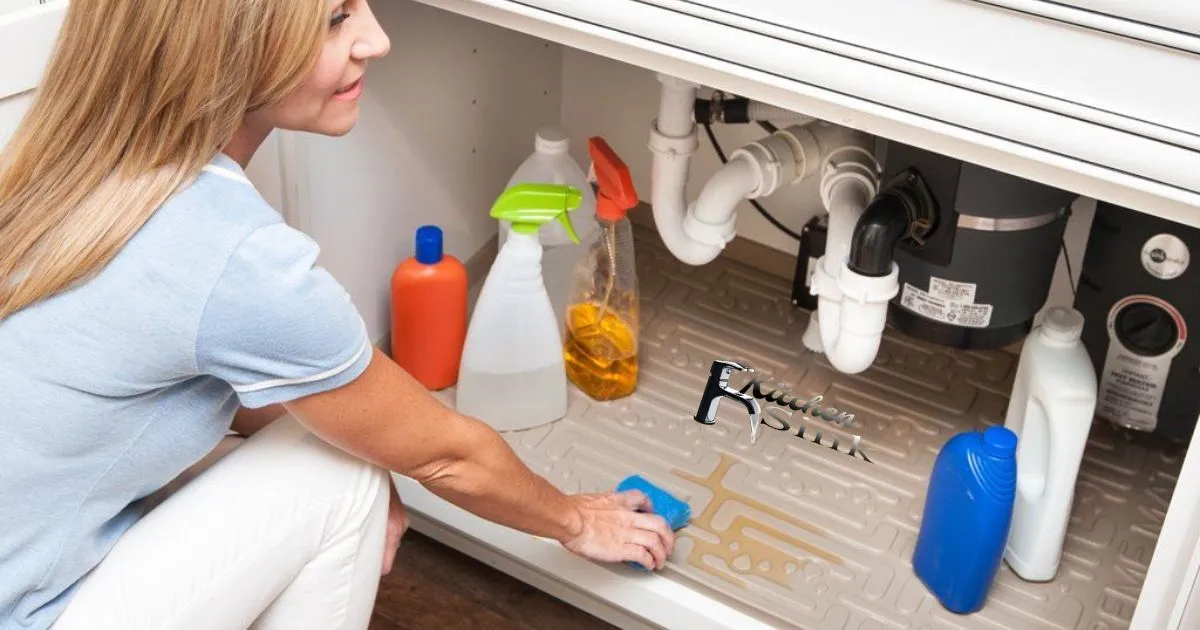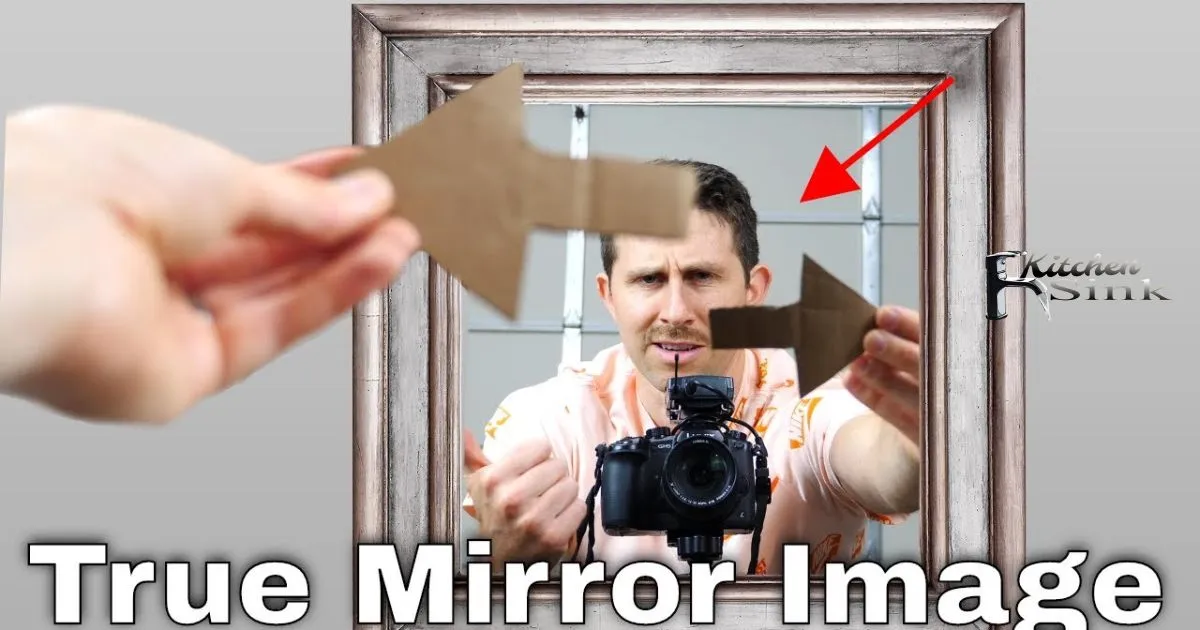Finding the source of a leak under the kitchen sink can be a frustrating experience for homeowners. A leak under the sink can cause water damage, mold growth, and higher utility bills if left unchecked. Knowing where to look and what signs to check for can help locate the origin of the leak quickly.
How To Find Leak Under Kitchen Sink? Finding the source of water pooling under your kitchen sink or detecting the origin of a musty smell in the cabinet can feel like solving a mystery. However, arming yourself with the right tools and focus points can help you crack the case in a timely manner.
Pinpointing the exact location of a leak under the kitchen sink requires patience and diligence. Examining certain areas methodically while the water is running can reveal the source. Tracing water trails back to their highest point or identifying gaps in pipe fittings helps zero in on the crack or hole responsible for the moisture. With careful sleuthing, you can find and fix that pesky leak.
How to Locate a Leak Under Your Kitchen Sink?
Start by running water in the sink for a few minutes while checking under the sink for any signs of dripping water. Use a flashlight to closely inspect joints, pipes, the garbage disposal, and connections to the sink.
Also check for signs of water damage like warped cabinets or damp areas. Wrapping pipes with toilet paper can help pinpoint small leaks. Perform a basin test by plugging the drain and filling the sink to put more pressure on the plumbing.
most common places for leaks under a kitchen sink
The most common places for kitchen sink leaks are at the joints connecting pipes, where the faucet lines connect to the faucet and water supply, where the garbage disposal connects, and where drain pipes connect to the wall or floor. Leaks also frequently occur where shut-off valves meet supply pipes or at nuts and washers.
signs of a leak under the kitchen sink
Signs of a leak under the kitchen sink include water pooling on the floor, damp or warped cabinet materials, a musty smell, moisture on pipes, loose nuts or fittings, cracked caulking around the sink perimeter, or an elevated water bill. Small leaks may only show toilet paper wrapped around pipes getting damp.
What tools will I need to find a kitchen sink leak?
Useful tools for finding kitchen sink leaks are a flashlight, towels or paper towels, toilet paper, an adjustable wrench or pliers to tighten fittings, caulking/sealant,Replace Kitchen Sink Without Replacing Countertopa basin plug, and containers to catch water. A voltage detector can also help locate moisture in walls.
pinpoint the exact location of a leak under the sink
To pinpoint the exact location, run water in the sink for a few minutes while closely inspecting joints and connections with a flashlight. Check below any damp areas in cabinets for drips. Wrap toilet paper or paper towels around pipes to locate small leaks. Use your hands to feel for moisture on hard to see areas. The basin test can also help isolate the source.
What Areas Should I Inspect to Find a Kitchen Sink Leak?
To find a kitchen sink leak, start by inspecting above the sink first. Check if water is getting under the sink rims and base of the faucets. Look for drops of water to locate the source of the leak. Also inspect the water supply lines and connections under the sink as leaks often occur there. Finally, check the drain pipe and seal under the sink for any sign of moisture or pooling water which could indicate a leak.
Should I check under the kitchen sink or inside the cabinet for leaks?
Yes, you should check both under the kitchen sink and inside the cabinets for leaks. Get a flashlight and start by running the water in both sink basins for a few minutes while checking for leaks. Pay close attention to where pipes, garbage disposals, and valves connect to the sink.
Also open the cabinet and use paper towels to dry areas thoroughly and look for moisture. Finding soggy towels or drops inside the cabinet could indicate a leak. Checking both under and inside the sink provides the best chance to catch a leak early before major damage occurs.
inspect the water supply lines under the kitchen sink
To inspect the water supply lines under a kitchen sink, start by locating the lines that connect to the faucet and sprayer if you have one. Trace the lines to check for moisture and pooling water which would indicate a leak.
Also look for corrosion and damage to the lines. Turn the water on and off a few times while observing the lines and connections for drips starting and stopping. Use a paper towel to dry the lines to check for small leaks. Also tug gently on sections of the lines to check if connections are loose. Replace any damaged or leaking water supply lines promptly.
look for on the drain pipe under the kitchen sink
When inspecting the drain pipe under a kitchen sink for leaks, start by looking for water pooling around the pipe which could indicate a leak. Also check above and below any connections in the pipe for moisture.
Verify the drain seal, which prevents pests and odors, is intact with no gaps or cracks. Remove the pipe if possible to inspect for corrosion and damage. Use a flashlight to look down the pipe for obstructions causing leaks. Also pour water into the sink drain while checking below for drips coming through leaks in the pipe. Address any leaks, damage or clogs found during inspection of the drain pipe immediately.
Can leaks occur on the sink bottom or along the sink edges?
Yes, leaks can definitely occur along the bottom or edges of a kitchen sink. Water from an overflowing sink or a faulty faucet can leak along the counter-sink seam and down to the cabinet below. Cracked or damaged areas along the bottom of a stainless steel or porcelain sink can also lead to leaks.
Make sure to run water in the sink and check along sinks edges and the bottom for any water dripping down. Use towels to dry the areas and check for moisture. Catching leaks early along sink edges and bottoms is key before water damage spreads under and inside the cabinets. Address any cracks or imperfections in sink materials that could be causing leaks.
How Do I Detect Water or Moisture from a Kitchen Sink Leak?
You can detect a kitchen sink leak by looking for visible signs of water or moisture under the sink such as puddles, drips, damp areas, warped or swollen cabinet materials, musty smells, and moisture on pipes or other hardware. Pay attention to the location of wet spots as this can indicate the source. For example, moisture around a pipe likely signals a leak from that pipe.
visual signs indicate a water leak under the kitchen sink
Visual signs of a water leak under the kitchen sink include water puddles or drips on the cabinet floor, moisture beads on pipes, damp or swollen areas on the cabinet walls or floor, stains from chronic dripping, peeling laminate, mold or mildew growth, and loose or missing caulk.
source if there is water on the floor under the sink
To find the source of a leak with water on the floor under the sink, start by cleaning and drying the area. Then run water and watch closely for new drips or moisture. Feel along pipes and hardware for wetness. Wrap toilet paper or paper towels around suspected areas. Put pipes under stress by running lots of water.
What areas get wet first from a leak under a kitchen sink?
The areas that typically get wet first from a kitchen sink leak are the back and underside of the cabinet behind the pipes, near joints and connections. Water then spreads downwards to puddle on the floor under the sink. The surrounding cabinet walls may also show early signs of moisture.
moisture meter to find hidden leaks under the sink
A moisture meter is a useful tool for locating hidden water leaks under a kitchen sink. It can detect elevated moisture levels in cabinet materials and around pipes, pointing you to the source even if you can’t see water. Moisture meters are inexpensive and easy to use.
What Tools Help Me Locate a Kitchen Sink Leak?
A flashlight is an essential tool for locating leaks under a kitchen sink. The confined space under the sink can be dark, so a flashlight allows you to visually inspect pipes, connections, and the underside of the sink. A mirror can also help – by angling a mirror, you can see the backside of pipes and areas that are difficult to view directly.
Other helpful leak detection tools include a basin wrench to loosen fittings and pipes to check connections, as well as a piping diagram of the sink’s plumbing layout. Having absorbent rags or towels on hand helps reveal leaks by soaking up dripping water.
flashlight to inspect for kitchen sink leaks
Using a flashlight when inspecting for kitchen sink leaks is highly recommended. The space under a kitchen sink can be cramped and dark, making it very difficult to visually locate leaks.
Shining a flashlight allows you to methodically check water supply lines, drain pipes, pipe connections, the garbage disposal, and the underside of the sink for drips of water and other signs of leaks. Slow leaks in particular can be nearly impossible to detect without a flashlight. Having a powerful, focused beam of light makes even small leaks clearly visible.
mirror help in finding leaks under a sink
A small mirror can be extremely useful for spotting kitchen sink leaks in hard-to-see areas under the sink. The confined space under a kitchen sink often has pipes and connections in awkward positions facing away from direct view.
By angling a small mirror, you can reflect light and your line of sight to inspect the backside of pipes, fittings, the sink underside, and other hidden areas. A mirror makes it easier to thoroughly check for leaks in cramped cabinet spaces.
What other tools make finding a leak easier?
Using a basin wrench allows you to loosen slip joints and PVC connections to check for leaks at pipe fittings. Slipping absorbent rags or paper towels around pipes gives leaks something to drip onto, revealing the leak location.
A piping diagram can help you systematically trace the plumbing layout to pinpoint where a leak is originating from. Leak detection dye tablets can be placed in drains to dye water at the exact leak location when water flows. Listening devices can detect the sound of dripping water inside walls. These tools, along with a flashlight and mirror, improve your ability to locate sink leaks.
When should I call a plumber for a kitchen sink leak?
You should call a professional plumber right away if you cannot locate the source of a kitchen sink leak or cannot access the leaking area. Persistent leaks behind walls or under flooring require a plumber’s expertise. If pipe fittings are severely corroded or pipes have extensive damage, a plumber has the skills to make necessary repairs. Complex plumbing configurations often need a professional assessment.
If the leak causes flooding or water appears to be entering electrical areas, immediately shutting off water and calling a plumber averts safety hazards and extensive property damage.
How Can I Prevent Future Leaks Under My Kitchen Sink?
To prevent future leaks under the kitchen sink, it is important to routinely inspect under the sink for any signs of moisture or corrosion, tighten any loose fittings, and replace any worn or damaged parts like washers or hoses early before leaks occur. Practicing good maintenance by pouring hot water weekly to clear drains, using drain cleaners moderately, and keeping the area organized makes it easier to spot leaks before major damage happens.
supply lines be replaced when a leak occurs under the sink
When a leak occurs under the sink, it is generally recommended to replace the supply lines at the same time as repairing the leak, as they may be corroded or worn where not visible and could fail soon after. Replacing supply lines during repairs prevents future leaks and avoids having to take everything apart again shortly after.
maintenance prevents leaks under a kitchen sink
Routine maintenance like tightening fittings, replacing washers, clearing drains, and organized storage helps prevent leaks under kitchen sinks. Regularly pouring hot water down drains, using drain cleaners moderately, inspecting pipes for corrosion, and fixing damages early are easy ways to avoid major leaks.
How often should I inspect under the kitchen sink?
Experts recommend inspecting under the kitchen sink periodically, at least seasonally, for any signs of leaks like moisture, rust, or musty odors. More frequent inspections, such as monthly, may be needed if you notice a leak or have had previous issues.
What sink materials are less prone to leaking?
Stainless steel sinks and components generally last longer and resist corrosion better than chrome fixtures. Plastic PVC pipes also experience less leaks over time versus metal pipes. Choosing higher quality fixtures and maintaining them well reduces the chance of leaks under kitchen sinks.
Frequently Asked Question
Where should I start checking to locate a kitchen sink leak?
Start by thoroughly inspecting supply lines, drain pipes, the garbage disposal, shut off valves and all connections under the sink for moisture or corrosion.
What are signs of a leak somewhere under the kitchen sink?
Dripping water, damp cabinets, musty smells, warped cabinets, mold, loose tiles or water puddles on the floor indicate an undersink leak.
How can I pinpoint the exact location of a leak under the kitchen sink?
Run water through the sink while observing all pipes and connections, use dye tablets in the drain, wrap plumbing with paper towels, or use a moisture meter on walls to detect origin.
What should I do if I still cannot determine the source of a leak under the sink?
Call a licensed plumber who has the expertise and tools to diagnose hard-to-find leaks under sinks using video cameras, pipe pressure tests and years of experience.
How can I prevent future leaks from occurring under my kitchen sink?
Replace old supply lines about every 5 years, tighten connections properly, fix drips quickly, maintain sink caulking, and consider whole-home leak detection systems.
Conclusion
The first step in finding a leak under the kitchen sink is to thoroughly inspect the area. Look closely at all pipes, joints, valves and the garbage disposal for signs of moisture, rust, or drips. Also check below the sink for water stains or a musty smell. Run water and stress test drain pipes to check for leaks. Use a flashlight to see behind pipes or use paper towels to locate moisture.
Detecting leakskitchen sinks requires patience but can prevent extensive water damage. Carefully inspect all plumbing fixtures while running water to pinpoint the source. Check for drips on pipes and moisture below the sink which indicates a leak. A step-by-step visual inspection combined with simple tools like flashlights and paper towels can aid in promptly locating leaks before they worsen or spread. Gettingleaks fixed quickly reduces costs and hassles down the road.



